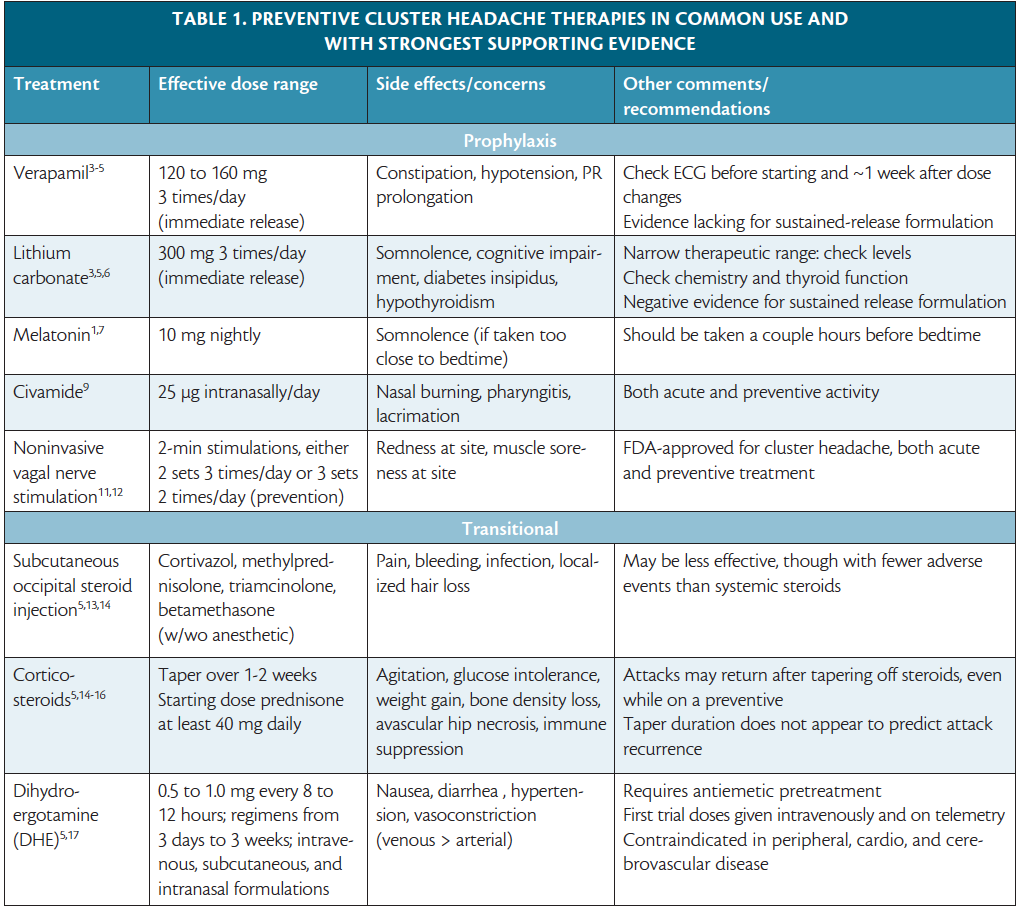Consider Verapamil if you’re struggling with cluster headaches. Studies show it can significantly reduce both the frequency and intensity of attacks for many patients. This isn’t a quick fix, but a potential long-term management strategy.
Your doctor will likely start you on a low dose, gradually increasing it as needed, carefully monitoring for side effects. Common side effects include constipation, dizziness, and swelling in your ankles. Open communication with your healthcare provider is key to managing these potential issues and optimizing your treatment plan.
Verapamil isn’t suitable for everyone. Individuals with certain heart conditions, low blood pressure, or liver problems may not be candidates. A thorough medical evaluation is paramount before beginning treatment. Discuss your medical history completely with your physician to determine if Verapamil is a safe and appropriate option for your specific situation.
Remember that Verapamil works differently for each person. Persistence and close collaboration with your doctor are crucial for achieving the best results. Don’t hesitate to report any changes in your headache pattern or experience any concerning side effects.
- Verapamil for Headache Treatment
- Cluster Headaches
- Migraine Prophylaxis
- Side Effects and Considerations
- Dosage and Monitoring
- What Types of Headaches Might Verapamil Help?
- Migraines and Other Headaches
- How Does Verapamil Work to Relieve Headache Pain?
- Impact on Blood Vessels
- Influence on Neurotransmitters
- Specific Mechanisms and Research
- Verapamil’s Effects on Headache Types
- Dosage and Consultation
- Dosage and Administration of Verapamil for Headaches
- Potential Side Effects and Risks Associated with Verapamil Use
- Cardiovascular Effects
- Other Potential Side Effects
- Verapamil vs. Other Headache Medications: A Comparison
- Comparing Verapamil to Triptans
- Verapamil and Other Preventative Medications
- When to Consult a Doctor About Verapamil for Headaches
- When to Schedule a Follow-Up
Verapamil for Headache Treatment
Verapamil, a calcium channel blocker, shows promise in treating specific headache types, primarily cluster headaches and migraine prophylaxis. However, it’s not a first-line treatment and requires careful consideration.
Cluster Headaches
For cluster headaches, Verapamil can reduce both the frequency and intensity of attacks. Doctors often prescribe it when other treatments prove insufficient. Typical starting dosages range from 80mg to 120mg daily, gradually increasing as tolerated to find the optimal dose for pain relief. Close monitoring of blood pressure is necessary due to potential side effects.
Migraine Prophylaxis
In migraine prevention, Verapamil’s efficacy is less established compared to its use in cluster headaches. It might offer benefit for some individuals, particularly those who haven’t responded to other preventative medications. Dosage adjustments are crucial, aiming for the lowest effective dose. Remember to discuss potential drug interactions with your doctor, especially if you’re taking other medications.
Side Effects and Considerations
Common side effects include constipation, dizziness, and nausea. More serious, though less frequent, side effects such as heart problems can occur. Regular blood pressure and heart rate monitoring are vital throughout treatment. Verapamil shouldn’t be used in certain individuals, such as those with specific heart conditions or severe liver problems. Always discuss potential risks and benefits with your healthcare provider before starting Verapamil for headaches.
Dosage and Monitoring
Dosage is personalized and adjusted based on individual responses and tolerance. Regular check-ups allow physicians to monitor for side effects and efficacy. Adjusting the dosage gradually minimizes adverse reactions and enhances treatment effectiveness. Open communication with your doctor regarding any symptoms is paramount.
What Types of Headaches Might Verapamil Help?
Verapamil shows promise in managing certain types of headaches, primarily those related to blood vessel constriction or abnormal electrical activity in the brain. It’s frequently used off-label for cluster headaches, offering relief from the intense, debilitating pain associated with these attacks. The drug’s calcium channel blocking properties may help to reduce the frequency and severity of these episodes.
Migraines and Other Headaches
While not a first-line treatment for migraines, some studies suggest Verapamil might benefit individuals with chronic migraine experiencing frequent attacks unresponsive to other therapies. It may also be helpful for certain types of hemicrania continua, a rare type of headache characterized by persistent, unilateral pain.
It’s important to note that Verapamil isn’t a cure-all for headaches, and its efficacy varies among individuals. Consult your doctor to determine if Verapamil is a suitable option for your specific headache type and medical history.
How Does Verapamil Work to Relieve Headache Pain?
Verapamil eases headache pain primarily by blocking calcium channels. This action affects the flow of calcium ions into certain cells, including those involved in transmitting pain signals.
Impact on Blood Vessels
By reducing calcium influx, verapamil helps relax blood vessels, particularly in the brain. This vasoconstriction reduction can alleviate the throbbing pain associated with migraine and cluster headaches stemming from dilated blood vessels. The effect isn’t instantaneous, but a gradual reduction in vascular tension.
Influence on Neurotransmitters
Beyond blood vessels, verapamil also influences neurotransmitters, the chemical messengers in the nervous system. It modulates the release of certain neurotransmitters, such as serotonin and calcitonin gene-related peptide (CGRP), known to play a significant role in migraine pain pathways. This modulation helps dampen the pain signals sent to the brain.
Specific Mechanisms and Research
While the exact mechanisms are still being investigated, research suggests that Verapamil’s effects on calcium channels and neurotransmitters contribute to its headache-relieving capabilities. However, it’s crucial to remember that Verapamil isn’t a first-line treatment for all headaches. Its use in headache management often depends on individual responses and the specific type of headache.
Verapamil’s Effects on Headache Types
| Headache Type | Verapamil’s Role |
|---|---|
| Migraine | Reduces vascular dilation and modulates neurotransmitters involved in migraine pain |
| Cluster Headache | May help reduce the frequency and severity of attacks by influencing blood vessel constriction |
| Other Headaches | Effectiveness varies. It’s not typically a first-line treatment for tension headaches. |
Dosage and Consultation
The appropriate dosage and suitability of Verapamil for headache treatment should always be determined by a healthcare professional. They will consider factors like your medical history and the nature of your headaches before recommending this medication. Self-medication is discouraged.
Dosage and Administration of Verapamil for Headaches
Verapamil dosage for headaches varies greatly depending on the specific type of headache, individual patient factors, and physician recommendations. Self-medication is strongly discouraged; always consult a doctor before starting any new medication.
Typically, Verapamil is administered orally in tablet or capsule form. Dosage will be gradually increased to find the most effective and well-tolerated level.
- Migraine Prevention: For migraine prophylaxis, lower doses are usually initiated, often starting between 80-120mg daily in divided doses. Your doctor may gradually increase this dose over several weeks, monitoring your response and side effects carefully. Maximum daily doses can reach several hundred milligrams, but this is determined on a case-by-case basis.
- Cluster Headaches: Verapamil is sometimes used off-label for cluster headaches. The dosage and administration strategy will differ significantly from migraine prophylaxis, often involving higher initial doses and potential for intravenous administration under medical supervision. Your doctor will develop a tailored approach.
Important factors affecting dosage include:
- Age: Doses are often adjusted for elderly patients due to potential for increased sensitivity and slower drug metabolism.
- Liver and Kidney Function: Impaired liver or kidney function can affect how the body processes Verapamil, potentially requiring lower doses or more frequent monitoring.
- Other Medications: Interactions with other drugs can occur. Inform your doctor about all medications, supplements, and herbal remedies you are taking.
- Follow your doctor’s instructions precisely: Never alter your prescribed dosage or frequency without first consulting your physician.
- Report side effects immediately: Common side effects include dizziness, nausea, constipation, and swelling in the ankles. Serious side effects are less common but require immediate medical attention.
- Regular monitoring: Your doctor will likely schedule regular check-ups to monitor your progress, assess side effects, and adjust your dosage as needed.
Remember: This information is for educational purposes only and does not constitute medical advice. Always seek the guidance of your healthcare provider for diagnosis and treatment of headaches and before starting any new medication.
Potential Side Effects and Risks Associated with Verapamil Use
Verapamil, while effective for some headaches, carries potential side effects. Commonly reported reactions include dizziness, nausea, and constipation. These usually are mild and often subside as your body adjusts to the medication. However, some individuals experience more significant effects.
Cardiovascular Effects
Verapamil’s impact on the heart requires careful monitoring. It can lower heart rate and blood pressure, potentially causing bradycardia (slow heart rate) or hypotension (low blood pressure). This risk is heightened in patients with pre-existing heart conditions. Regular blood pressure and heart rate checks are recommended, especially during initial treatment.
Other Potential Side Effects
Less frequent, but still possible, side effects include swelling in your ankles or feet (peripheral edema), fatigue, and headache. Rarely, liver problems or allergic reactions can occur. Seek immediate medical attention if you experience severe allergic reactions such as difficulty breathing or swelling of the face, lips, tongue, or throat.
Inform your doctor about all medications you are taking, including over-the-counter drugs and supplements, as interactions are possible. Openly discuss your medical history, particularly concerning heart conditions, liver problems, or any allergies. This information helps your doctor determine if verapamil is the right treatment for you and allows them to closely monitor your condition for any complications.
Verapamil vs. Other Headache Medications: A Comparison
Verapamil offers a distinct approach to headache management compared to other commonly used medications. While triptans directly target the pain pathways, Verapamil works by influencing calcium channels, potentially preventing the headache from developing in the first place. This makes it particularly suitable for preventative treatment of migraine and cluster headaches.
Comparing Verapamil to Triptans
Triptans provide rapid relief during an acute migraine attack but are less effective for prevention. Verapamil, conversely, focuses on long-term headache reduction, but doesn’t offer immediate pain relief during an attack. Patients often use both; triptans for acute episodes and Verapamil for ongoing prevention.
Verapamil and Other Preventative Medications
Beta-blockers and anticonvulsants are also utilized for headache prevention. Verapamil sometimes shows greater efficacy for specific headache types, such as cluster headaches, where other preventatives may prove less successful. Doctors typically consider individual patient responses, tolerance, and comorbidities when selecting the most appropriate medication.
Side effects vary significantly across medications. Verapamil’s common side effects include constipation, dizziness, and swelling in the ankles. Beta-blockers can affect heart rate and blood pressure. Each medication demands careful monitoring and consideration of potential interactions with other drugs.
When to Consult a Doctor About Verapamil for Headaches
Contact your doctor immediately if you experience chest pain, irregular heartbeat, swelling in your ankles or feet, or severe dizziness. These could indicate serious side effects.
When to Schedule a Follow-Up
Schedule a check-up appointment with your doctor after starting Verapamil to monitor your blood pressure and heart rate. They will also assess headache frequency and intensity. Regular monitoring is particularly important in the first few weeks of treatment.
Additionally, contact your physician if your headaches worsen, change in character, or if your current medication doesn’t provide adequate relief after a reasonable trial period (typically a few weeks). Your doctor can adjust the dosage or explore alternative treatment options.
Report any new or worsening symptoms, regardless of seeming unrelated to the headaches or Verapamil, to your healthcare provider. Open communication is key to safe and effective treatment.




